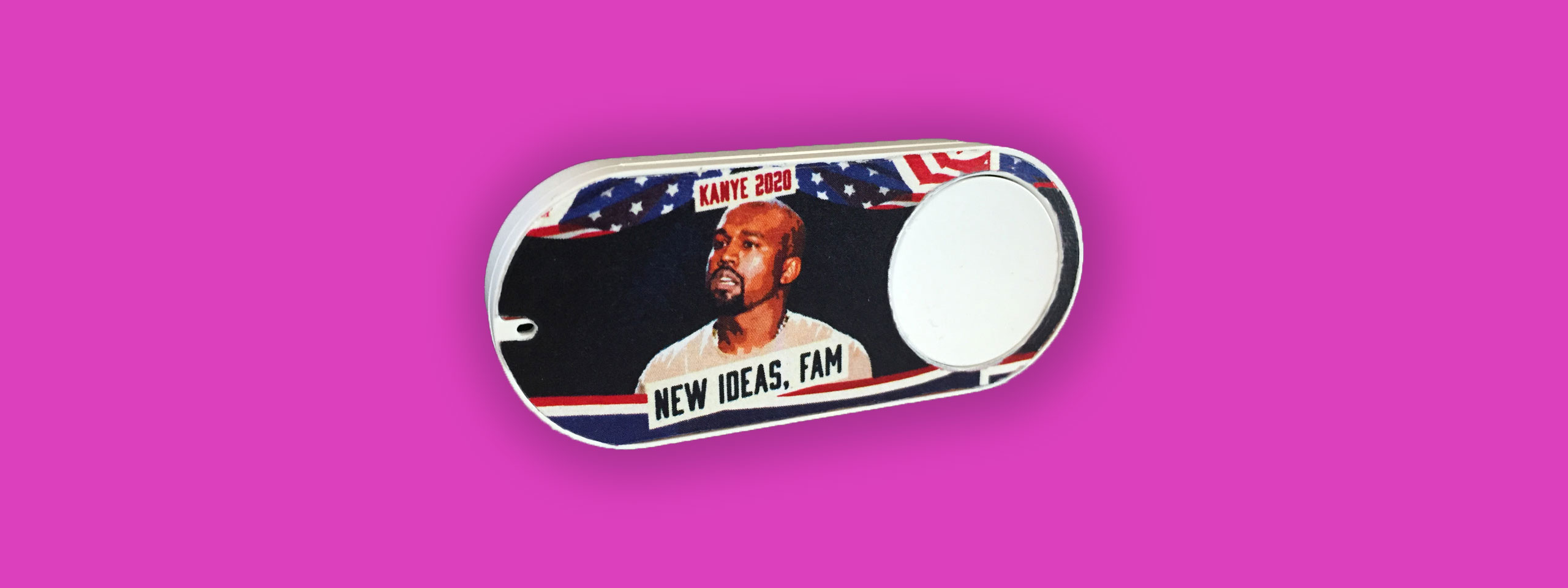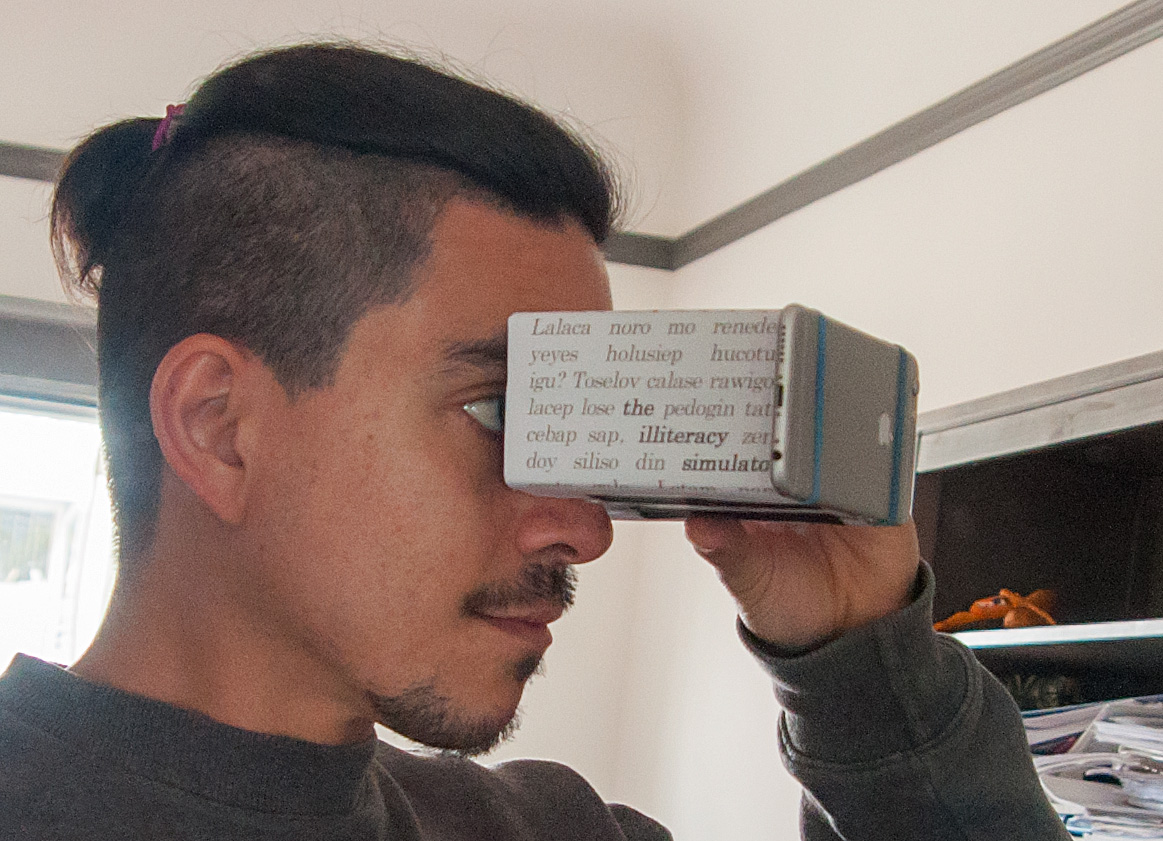Art + Tech Experiments
A collection of creative code and digital / physical creations.

The Kanye Button
Prior to the release of developer-friendly Dash buttons, I hacked an Amazon Dash Button so when the squad needs inspiration we can summon the greatest creative genius of our time.
When pressed, The Kanye Button sends a random Kanye inspirational quote GIF to our team’s Slack channel. The button floats around our office allowing anyone to randomly send us new ideas, fam, providing a constant source of annoyance inspiration for my coworkers on the daily.
How It Worked
- A Python script listens for the Dash on the local WiFi network
- When the Dash Button is pressed, it pulls from the Giphy API and pushes the data to a custom IFTTT Maker channel
- IFTTT takes the HTTP push data and connects it to Slack
Digital<->Physical Spookytime Projections
A digital<->physical web app that allowed kids to interact with a randomized, rear-projected Halloween / Day of the Dead loop combining video clips with psychedelic skullz rendered in real time. An Amazon IoT button was mounted outside of my window which neighborhood kids could press to trigger graphical easter eggs. We had over 100 kids come by and ran out of candy!
HTML5 / node.js / Azure / AWS Lambda / Amazon IoT
Leap Motion // Interface Mapping
A prototype which uses a Leap Motion to make everyday objects “touchable” without any need for a physical sensor.
This was originally prototyped as a promotional display for a major US beverage company. Users would be able to interact with the objects triggering a corresponding event in the software, and then take one, open it, and drink it. Staff would then replace the can which would become “touchable” again automagically.
The Illiteracy Simulator

Inspired by Pearson’s Project Literacy VR installations, I set out to prototype a method for anyone to empathize with illiteracy though direct experience using a similar VR mechanic. I also wanted to make it accessible to anyone, including those without a VR headset.
The insight is that our literacy is something we take for granted until we travel abroad and realize even basic things, like making sense of a street sign, are nearly impossible when we can’t read the text. Using a piece of non-Google cardboard, a scissors, two rubber bands, and the Google Translate app set to a language I don’t understand, The Illiteracy Simulator was born.